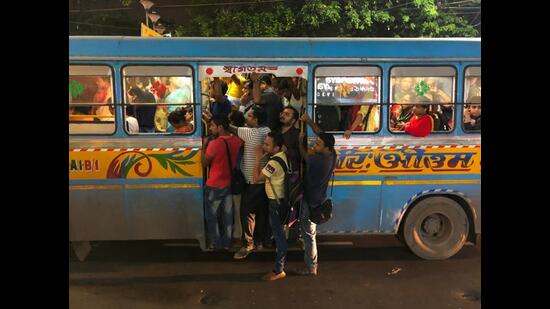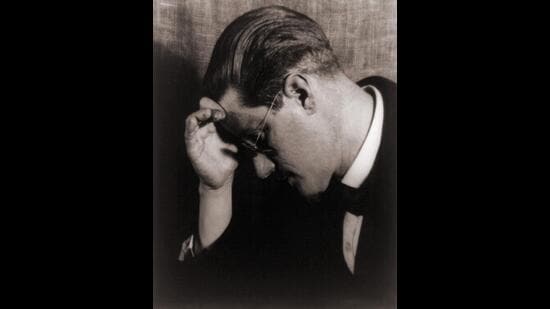Essay: The deception of creative writing
The sudden clamour for the creative writing workshop is unsurprising in a country where coaching camps and manuals for engineering and medicine entrance exams have always been sure-fire best-sellers. But is great writing really all about the craft taught at these programmes?
“We’re moving from the age of consumption to the age of production.”

The noted composition theorist Andrea Lunsford, said this to me about 10 years ago. Put that next to what I heard a bookseller in Calcutta’s College Street say more recently: “No one is reading these days, everyone is just writing writing!” You get the picture of an age where the declining interest in reading is matched by a widely-articulated interest in writing. Can you be a committed writer if you’re not also a serious reader? For those misled enough to believe that you can, the creative writing course or workshop appears to offer the false promise of an easy route. What does this mean for English-language writing in India?
There is no such thing as a time or a country ripe for writing. English-language writing, in any case, has thrived in India for nearly 200 years, prospering past the post-Independence skepticism about the use of a colonial language for artistic practice. But the enthusiasm for creative writing workshops – that rather American pursuit – now seems to be festering all over Anglophone India. While the desire to write and articulate cannot be a new thing, the need to forge these communities charts the real and virtual aspirations of a new India, of the jagged ambitions of its geographical formations, as well as many of its fears and anxieties. In a country where coaching camps and manuals for engineering and medicine entrance exams have always been sure-fire bestsellers, suddenly there is a new contender that straddles all age groups – the creative writing workshop. The quick lust for “craft”.
But how mutually distinct are the categories of reader, writer, critic – how detachable from one another? In Possessed: Adventures with Russian Books and People Who Read Them, Elif Batuman writes about making a choice between a writing fellowship in Cape Cod, Massachusetts, and a PhD programme in Russian literature at Stanford. The aggressively romantic appearance of the writing colony in a windswept trailer not only contrasted with the lush landscape of affluence, vigilance and high-tech of the Stanford campus, but offered a pointed opposition to what the director of the writing colony dismissively called the academic study of literature. In contrast, Batuman identified the American creative writing program offering “the ideal of craft”, symbolically nestled, that rainy afternoon in New England, in what she described as the Puritanical “culture of “creative writing””

Batuman, who went on to finish her doctorate in Russian at Stanford to turn that possession-obsession-adventure into material for her life as a writer of fiction and non-fiction, does not have kind words to say about the “craft”-centered vision of American Creative Writing Programs. For her, literature is better imagined as a profession, an art or a science, anything but a craft. The preoccupation with craft produces nothing but soulless technical exercises of a limiting kind, leaving the big questions untouched. “What did,” she asks, “craft ever try to say about the world, the human condition, or the search of meaning?” The pedagogy of craft merely hands down “negative dictates”: “Show, don’t tell; Murder your darlings; Omit needless words.”
If we are to come out of the vision of writing purely being a personal, idiosyncratic, or mystical process – then a focus on craft feels like the easy way to create a pedagogy for it. But as I teach and shape the curriculum in the new Creative Writing Department at Ashoka University, I realise that I share much of Batuman’s reservations about making craft the centre of our pedagogy. Her reservations remind me of my own frustration during my American MFA, when my peers did not understand why I was writing rambling, Joycean stories about riding in crowded Calcutta buses and staring raptly at the worn bags of bus conductors, and I did not get their Carvaresque stories of minimalist language and clipped dialogue about middle-aged white men drowning their angst in bars. Undeniably, it was a conflict between minimalism and modernist lyricism, Carver vs Joyce, that leaves me embarrassed today, but there is more to it, much of which I recognize as I hear Batuman’s voice.

I hear an echo of this frustration as I read her words: “I thought it was the dictate of craft that had pared many of the Best American stories to a nearly unreadable core of brisk verbs and vivid nouns – like entries in a contest to identify as many concrete entities as possible, in the fewest possible words.” Our colleague in this new department, the poet and novelist Amit Chaudhuri has articulated a comparable uneasiness about the easy-fix, craft-driven approach to creative writing programs on various occasions, including the essay, “Travels in the subcultures of modernity,” a memorable account of teaching at the MFA Program of Columbia University’s School of the Arts, where his teaching of Indian-language literature to the students brought alive unpredictable disruptions of a Western model of craft.
Indeed, the predominant language of craft that informs existing creative writing pedagogies bears the recognizable signature of the American MFA program. Even an American writer like Batuman, drawing on her deep adventure with Russian books, recognizes the limitation of this craft-centered approach, to say nothing of other American critiques of MFA pedagogy and subculture, such as Chad Harbach’s MFA vs NYC, or more pointedly, Junot Díaz’s sharp race-critique, MFA vs POC. They bring very different reservations and objections to the table, including political and economic ones that are inextricably entwined with the aesthetic texture of the pedagogy. Chaudhuri’s intervention in the Columbia MFA program, to teach Indian literature to American students – “to civilize the natives”, in his ironic formulation, also brings to light the failure of this existing narrative of craft before literature from a non-western culture. Enabling creative writing pedagogies in India, something for which there seems to be tremendous readiness and enthusiasm both within and beyond the academic campus, asks for a long and hard look at the easy promise made by craft-based pedagogy as well as its limitations in a country like India.
It is impossible not to feel deeply divided by this question. On one hand, too often does one feel that there is no dearth of talent in the arts in India – but the arts seem to lack systems that can harness learning and experience for people. Like most things in India, the arts, too, run on idiosyncratic talent and eclectic charisma, rarely accompanied by the means through which a larger cross-section of aspirants can benefit from the talent and experience of individual practitioners. But this is also the country where one of the most intense forms of artistic training, that in the field of classical music, has been traditionally organised across blood and family loyalties, and deeply local traditions, rather than the community-agnostic openness of Western seminaries. As creative writing makes a pointed entry as a field of exchange, learning and discussion, notwithstanding the excitement, we have to reckon with the unanswered questions that look us in the eye.
Saikat Majumdar’s most recent book is The Middle Finger, a campus novel about poetry, performance, and mentorship. @_saikatmajumdar
All Access.
One Subscription.
Get 360° coverage—from daily headlines
to 100 year archives.



HT App & Website






